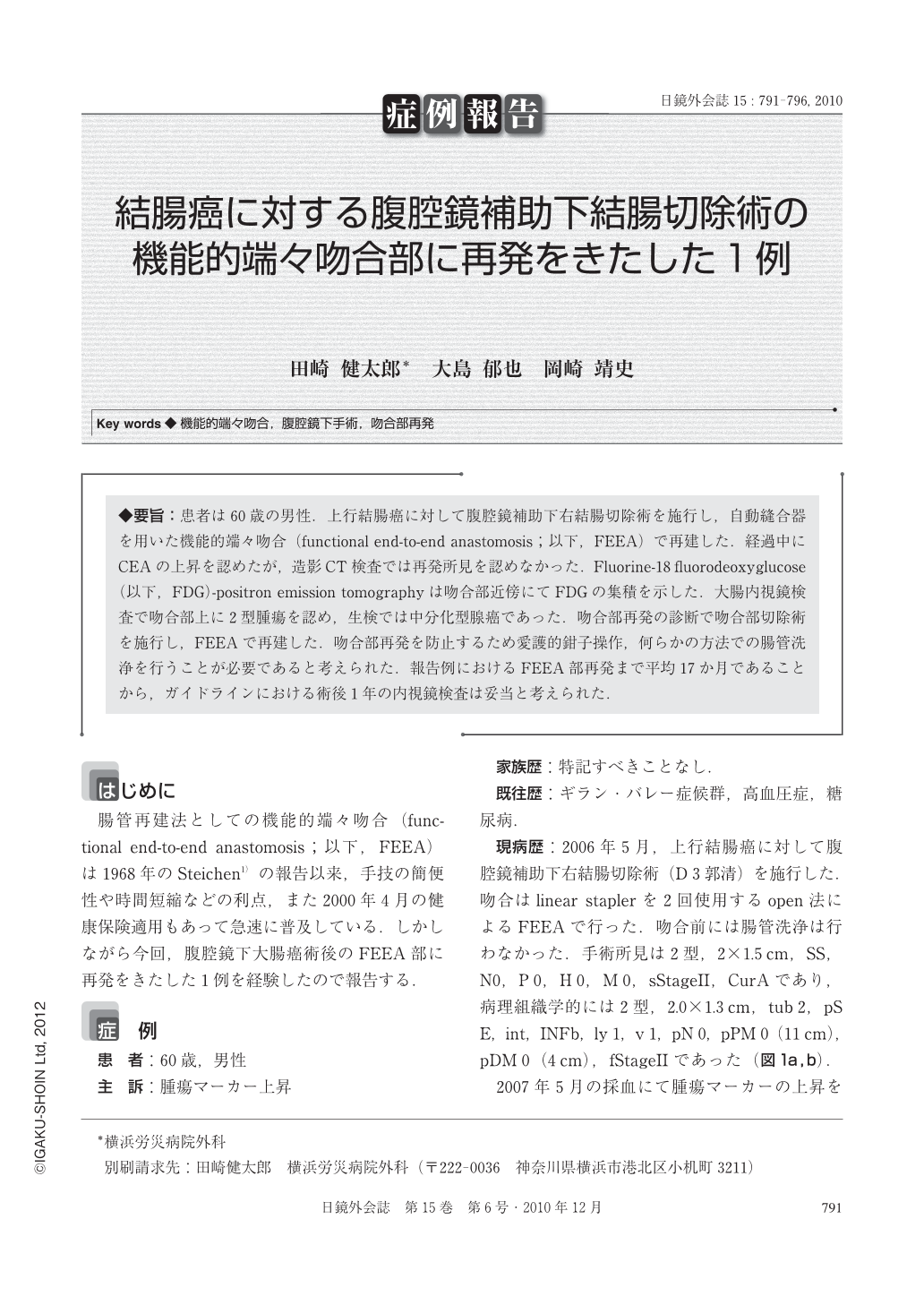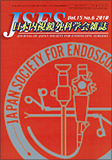Japanese
English
- 有料閲覧
- Abstract 文献概要
- 1ページ目 Look Inside
- 参考文献 Reference
◆要旨:患者は60歳の男性.上行結腸癌に対して腹腔鏡補助下右結腸切除術を施行し,自動縫合器を用いた機能的端々吻合(functional end-to-end anastomosis;以下,FEEA)で再建した.経過中にCEAの上昇を認めたが,造影CT検査では再発所見を認めなかった.Fluorine-18 fluorodeoxyglucose(以下,FDG)-positron emission tomographyは吻合部近傍にてFDGの集積を示した.大腸内視鏡検査で吻合部上に2型腫瘍を認め,生検では中分化型腺癌であった.吻合部再発の診断で吻合部切除術を施行し,FEEAで再建した.吻合部再発を防止するため愛護的鉗子操作,何らかの方法での腸管洗浄を行うことが必要であると考えられた.報告例におけるFEEA部再発まで平均17か月であることから,ガイドラインにおける術後1年の内視鏡検査は妥当と考えられた.
A 60 year-old man underwent laparoscopy assisted right colectomy with functional end-to-end anastomosis(FEEA). CEA elevation was observed in the follow-up period, but no recurrence findings were recognized in the enhanced CT. Fluorine-18 fluorodeoxyglucose accumulation was obserued near the anastomosis on PET imaging. A type 2 tumor was recognized on the anastomosis by colonoscopy, and moderately differentiated adenocarcinoma was proven in the biopsy. Finally, we performed resection of the anastomosis with FEEA with the diagnosis of anastomotic recurrence. To prevent anastomotic recurrence, grasping near the tumor must be avoided and the colon must be lavaged in some way. According to the literature, anastomotic recurrence was detected 17 months after surgery on the average. It was thought that it was proper to perform large bowel endoscopic examination 1 year after surgery which was recommended in the guideline for how to follow up colonic cancer.

Copyright © 2010, JAPAN SOCIETY FOR ENDOSCOPIC SURGERY All rights reserved.


